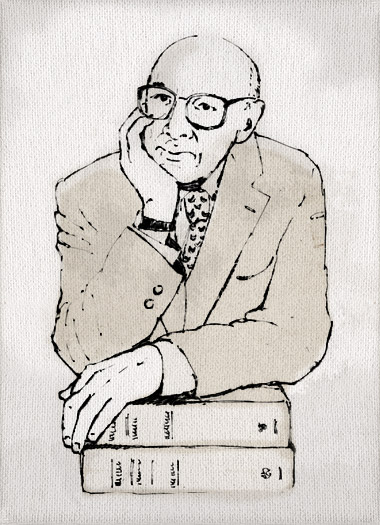President’s Message / Noted in the Margins
 One of the few downsides of my job is the serious crimp it puts into recreational reading. The lengthy treatises I routinely peruse about “Is College Worth It?” or the rise of massive online courses, while certainly important, are not exactly what you would call pleasurable.
One of the few downsides of my job is the serious crimp it puts into recreational reading. The lengthy treatises I routinely peruse about “Is College Worth It?” or the rise of massive online courses, while certainly important, are not exactly what you would call pleasurable.
When my schedule does open up a bit, I try to sneak in a book or two from my swelling wish-list of titles. (As you’ll see in “The Word on Summer Reads,” page 22, apparently so do many of my SNC colleagues.) Over last winter’s midterm break, for instance, I devoured two books by Hilary Mantel, “Wolf Hall” and “Bring Up the Bodies” – delicious fictional accounts of the marital machinations of Henry VIII. I anxiously await her impending third and final volume. Who will keep their heads?
With summer, I typically would be cadging some additional reading time from around our planning for fall semester. But – with one notable exception (see page 14) – not this year.
You see, I’ve been busy – finishing my own book.
For longer than I care to admit, I’ve been working on a biography of an iconic figure in American letters, Joseph Mitchell. Mitchell, who died in 1996, was a staff writer at The New Yorker magazine for most of his life, and from the Thirties through the mid-Sixties he turned out some of the most indelible portraits in the nonfiction canon. If you love to read but have never encountered the Greenwich Village gadfly Joe Gould, or Mazie the Bowery ticket-taker, or cemetery-tender George Hunter, there is a void in your life waiting to be filled.
I got to know Joe in person 20 years ago, when I was working on another biography – this one about the man who founded The New Yorker, Harold Ross. Ross hired Mitchell as a staff writer in 1938, and they were close. Joe could not have been more helpful to me, and several books later, when I was settling on my next project, I hit on the idea of profiling Joe himself.
This was, of course, long before St. Norbert would enter the picture. As it happens, though, Joe Mitchell had what one might call a very Norbertine outlook on life and people. His subjects were neither glamorous nor rich. On the contrary, they were marked by their flaws, often self-inflicted foibles, and bad luck – in a word, their humanity. Yet for all that, they prevailed. And Joe related their stories with empathy, great humor, and not a little wisdom. One of his best-known portraits was of a bearded circus performer named Lady Olga, who worked the sideshows all her life. Joe closed the story by quizzing Olga about what it was like to be considered a freak. But she would have none of it. “If the truth was known,” she tells him, “we’re all freaks together.”
Why do educators – even college presidents – write books and do research? Well, we think it’s imperative for creative people to stay creative. This keeps our faculty’s outlook in their disciplines fresh, and it helps ensure that their teaching is as current as possible.
Besides, the best teaching is always by example, is it not?
So I have spent my summer toiling to get a final manuscript to my publisher by Labor Day. And with a little luck, by next summer I’ll again be doing more reading – and less typing!
July 2, 2013











